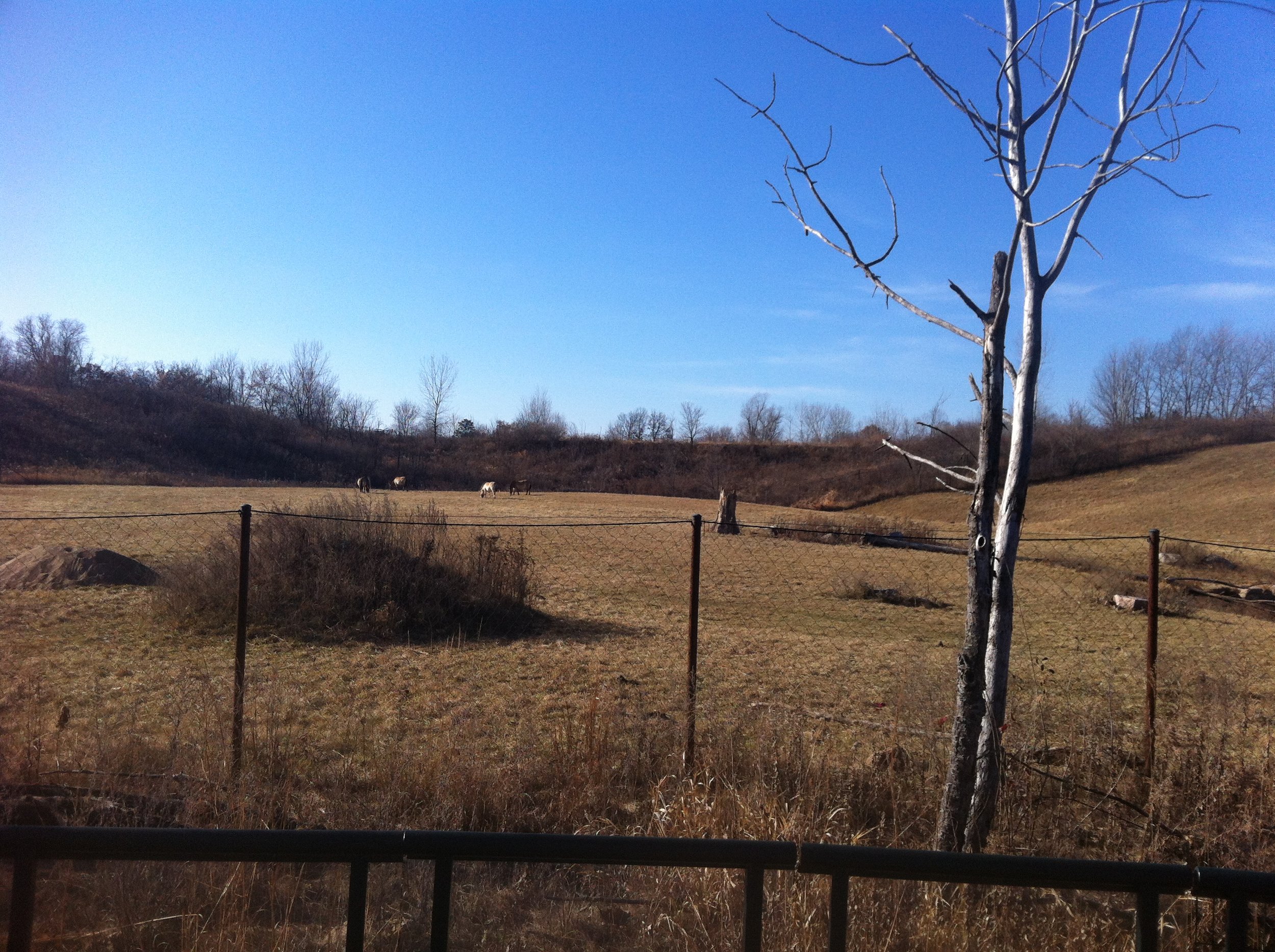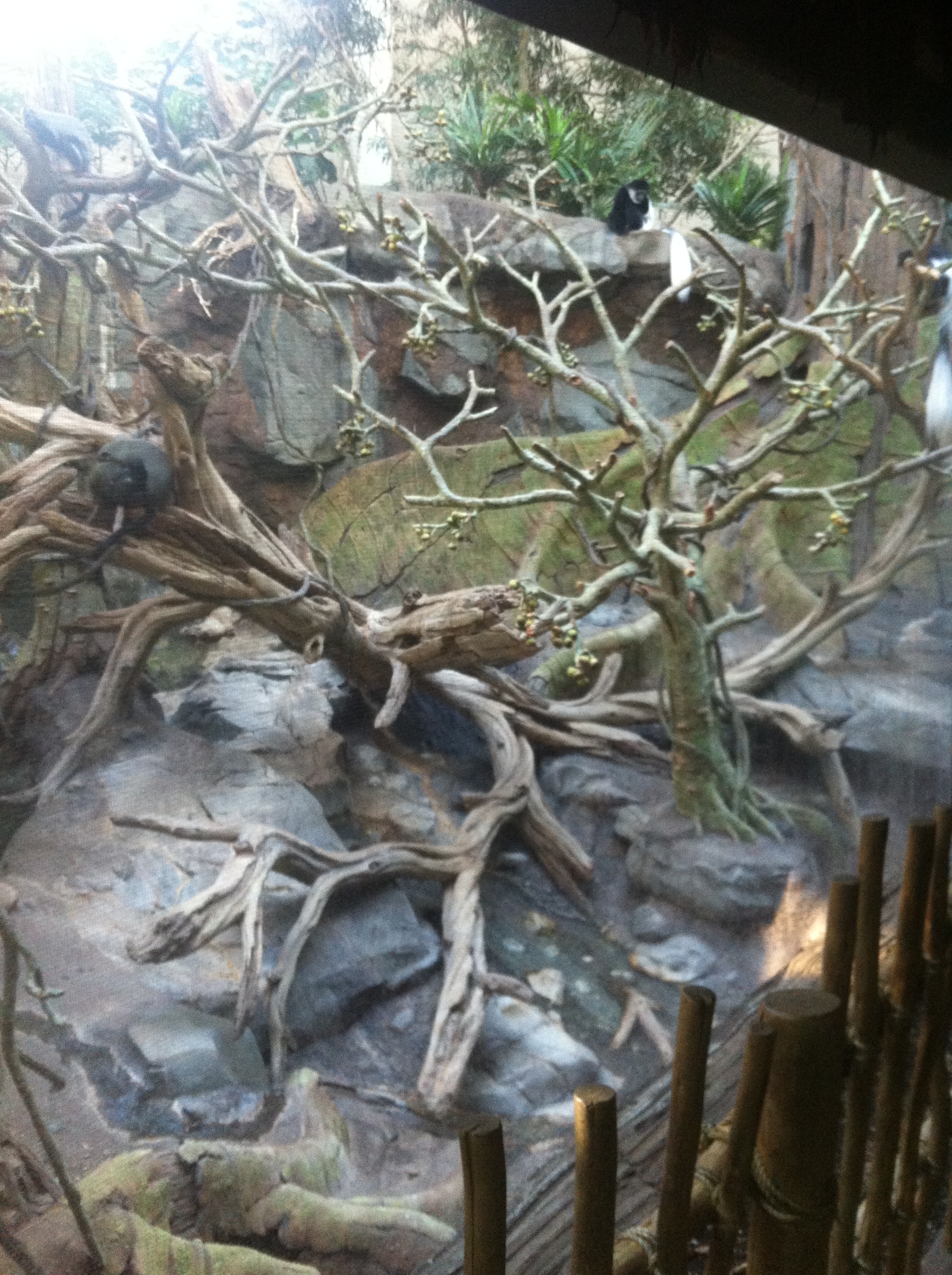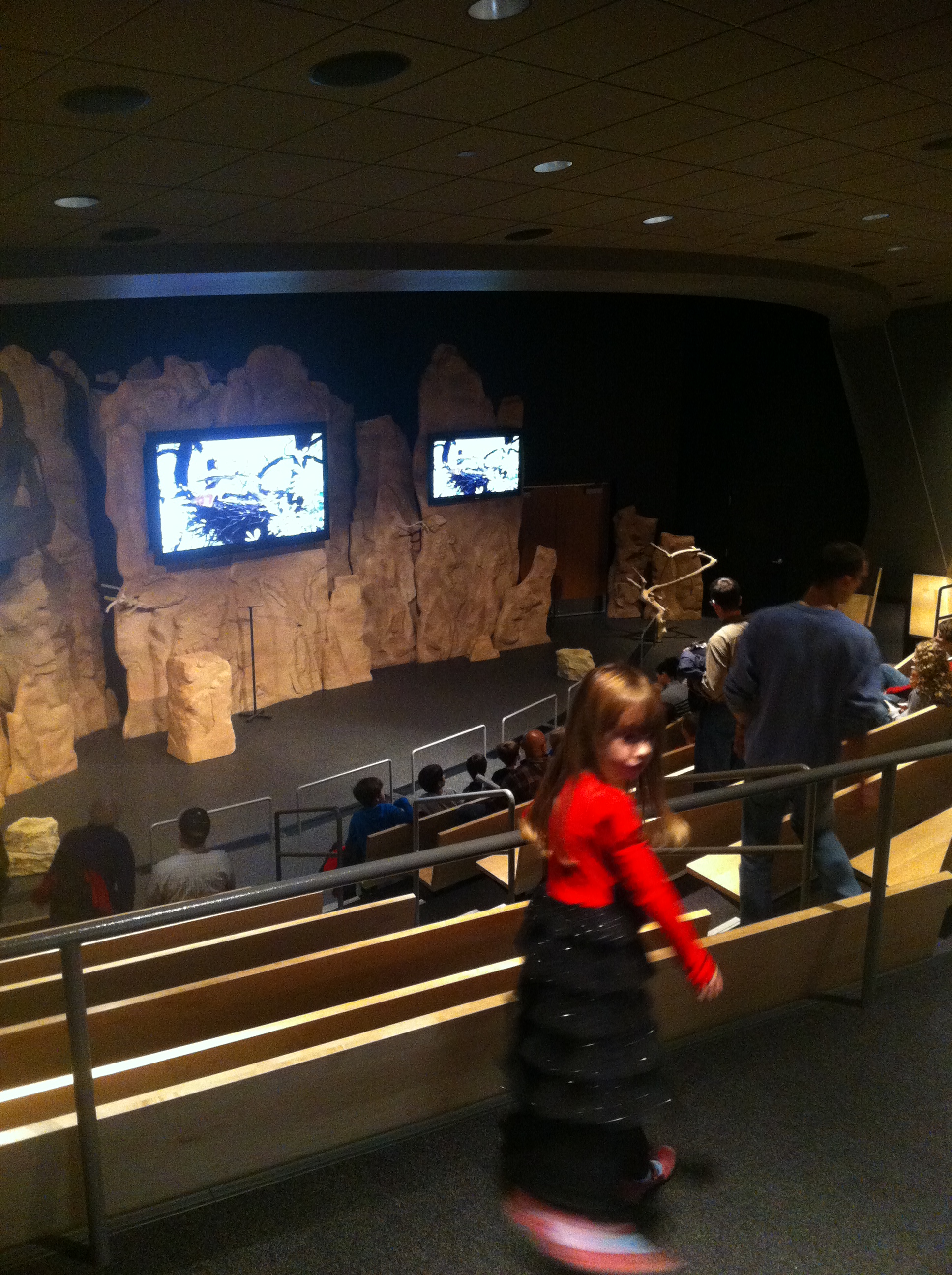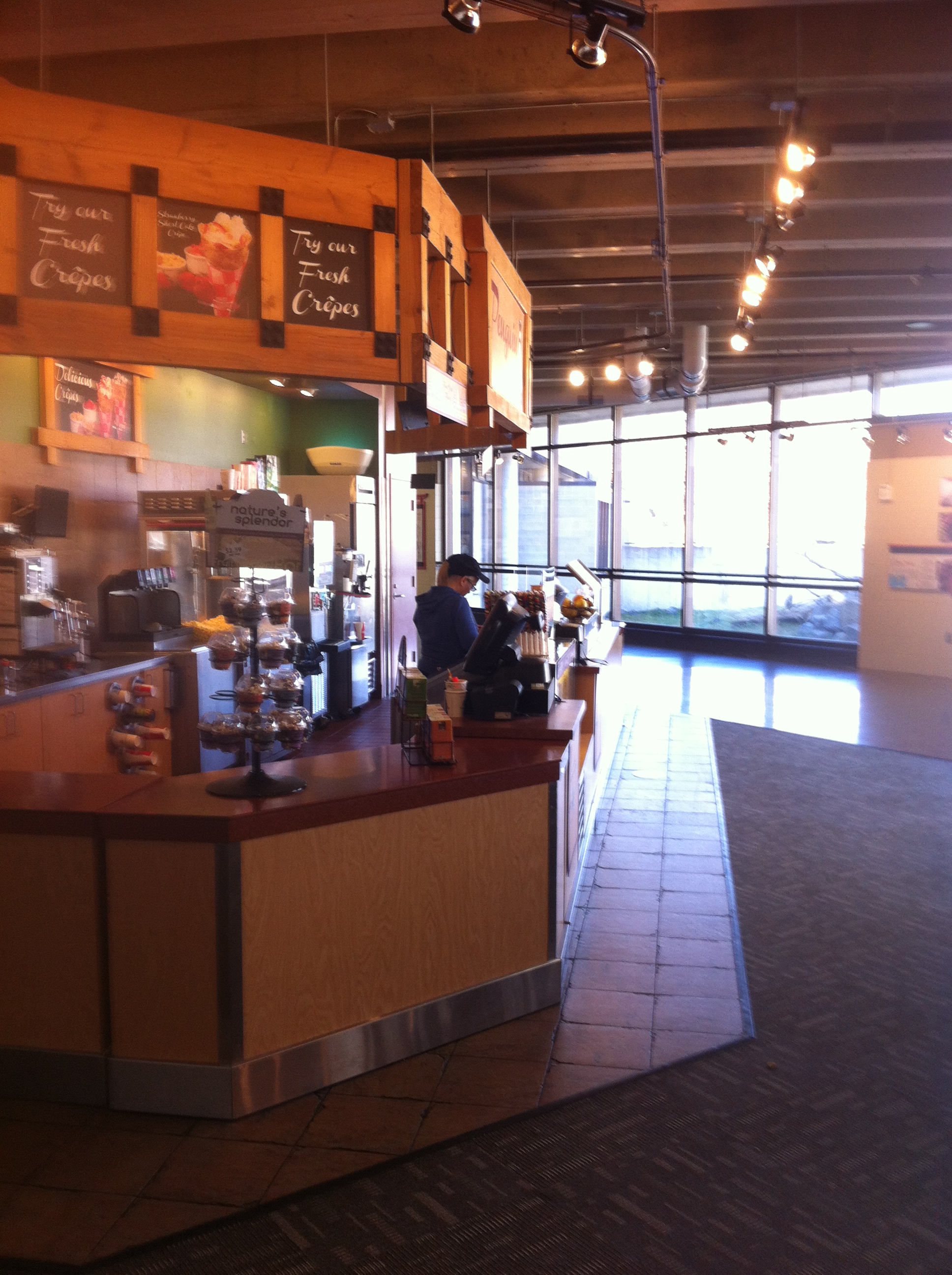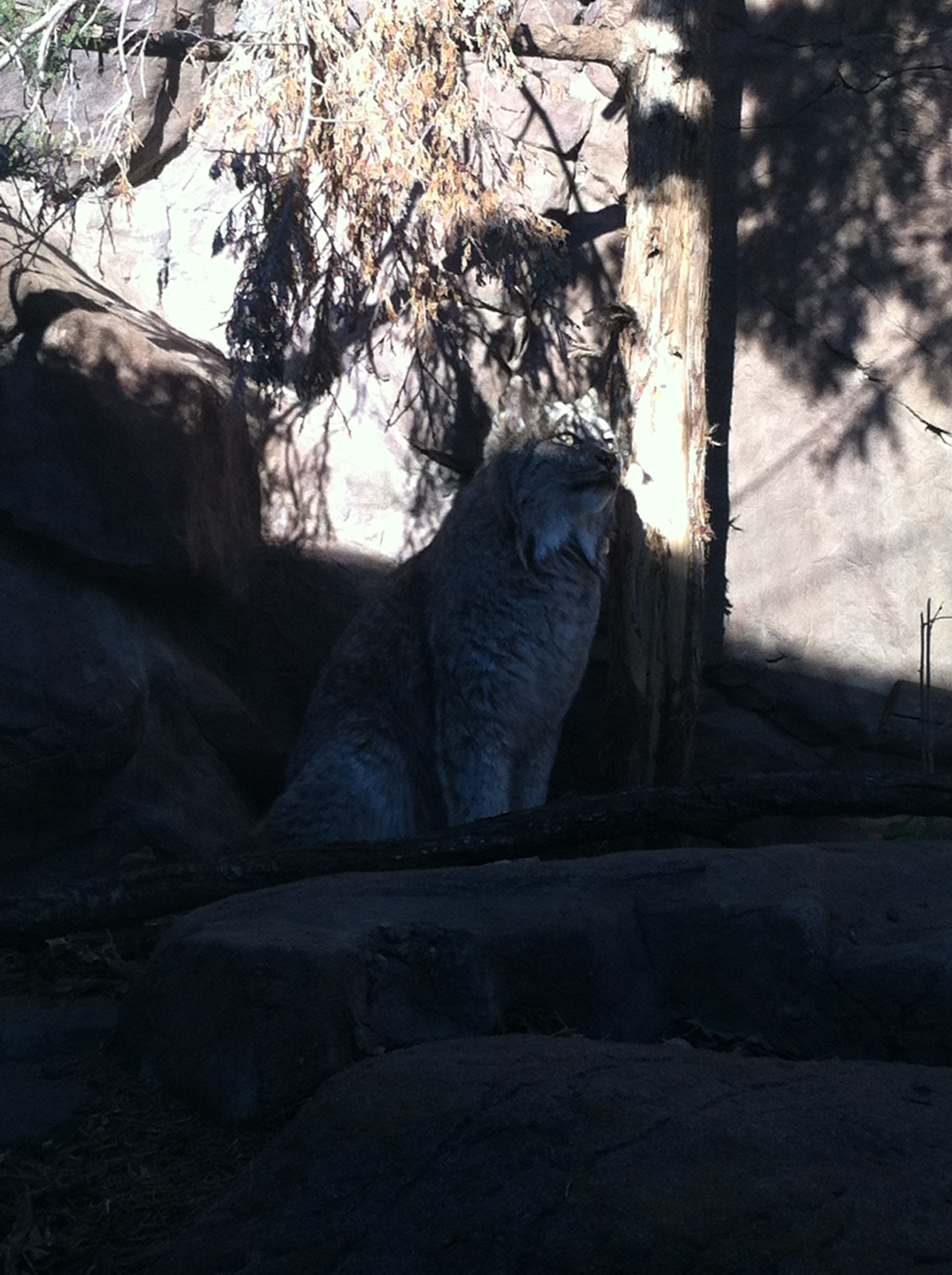The Minnesota Zoo, located in the southern suburbs of the Twin Cities, has long been on my list of must-sees, but especially so after the opening of the much lauded Russia’s Grizzly Coast four years ago. Of course I would find myself flying to the Great White North a few days before Thanksgiving—what better time of year to visit? Luckily for me, it was a beautiful, sunny, warm day with just enough visitors to make it interesting.

The Zoo is located near a wildlife preserve and surrounded by residential neighborhood. The grounds are beautifully wooded with several lakes and wetlands. Most of the exhibits are new or recently renovated, with those untouched slated for improvements soon. The Zoo is large enough to fill most of a day (I saw everything except the Farm in a leisurely 5 hours), and is well-organized, avoiding large stretches of nothing to see or having to backtrack.
But what makes the Zoo so interesting to me is its understanding of self. It’s a very self-aware Zoo.
You may think my next statement is obvious, but its important. The Zoo is located in Minnesota. Snowy, cold Minnesota. This is not balmy Florida. This is not even temperate St. Louis. This is a very specific climate. Cold in the winter. Not as cold in the summer. Why is this important? Let me tell you.
First, climate dictates animal collection. Many zoos try to shoe-horn species into their collection based on popularity with their market, such as African mammals in Canada or polar bears in the Bahamas. While this can be done successfully, it is very limiting in that it restricts animal access to outdoors. This in turn either increases project costs by creating massive indoor exhibits or creates distinct seasonality for the exhibits. Minnesota Zoo made the decision to feature climatically appropriate species along their outdoor trails. This means the animals will be active and happy year-round, making for a great experience for those hearty enough to brave the exterior exhibits in winter.
The Zoo has invested in some wonderful indoor exhibits as well--which leads to my next point: Climate dictates organization. Minnesota Zoo realized that in order to attract any guests at all during the long cold winter, many exhibits would need to be indoors. Instead of scattering those indoor exhibits along a main path throughout the zoo, the indoor exhibits are clustered around the main entry. This allows guests to take off their winter coats, drop them into a locker, if they so choose, and spend several hours enjoying the zoo in a comfortable environment.
What’s more, the indoor exhibits are genuinely good. The Tropics Trail features rainforests from around the globe allowing a broad range of mixed species exhibits-- including a beautiful reef tank featuring the unusual zebra shark and--when I was there--the amazingly popular tank-cleaning diver.
As for Russia’s Grizzly Coast, it is genuinely engaging, featuring many charismatic species including brown bears, sea otters, tigers and leopards in beautiful and complex exhibits. The rather simple tiger exhibit is huge, and even when the tiger is far in the distance, can easily be seen due to the slope of the exhibit and the elevated, center viewing platform (although I was there when the foliage was dormant, so my experience may be different from others').
Throughout, the Zoo thoughtfully designed places to encourage up-close viewing of the animals. At the small, but well-executed African penguin exhibit, the exhibit setting extends into the guest space via climbing rocks to allow kids to get face to face with the penguins. The bear exhibits have dens with windows--and they actually use them. The cat exhibits are long and skinny so they can be seen even when fully asleep on a rock.
Of course, I am obligated to find some faults. Overall, my biggest concern was with the interpretives. They were too heavy with text and generally, not integrated into the thematic story of the experience. They were in no way terrible; they simply were not up to the level of design of the physical habitats.
My other concern was revenue locations. This may be a result of visiting during winter when many stands are closed for the season, but I found myself wishing for a nice place to stop and have lunch at the halfway point near the Grain Elevator. Perhaps a sit down restaurant overlooking one of the lovely spacious exhibits of the Northern Trail, or adjacent to one of the Tiger exhibits would work well. At the main entry building, the zoo restaurant (a food court) is directly next to another snack stand, Penguin Café, which seemed to me would hurt profits. I could be wrong though. And of course, the retail shop is in the wrong spot entirely—located between food court and Penguin Café. To maximize profits, always locate near the entry--and encourage guests to exit through the gift shop.
Overall, the Minnesota Zoo is a great zoo and highly recommended. If you live nearby, remember the zoo is winter friendly, so go visit in January. I swear you’ll be just fine.



